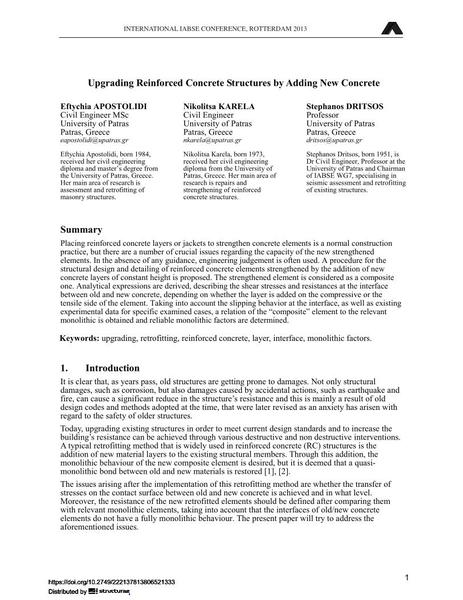Upgrading Reinforced Concrete Structures by Adding New Concrete

|
|
|||||||||||
Bibliographic Details
| Author(s): |
Eftychia Apostolidi
Nikolitsa Karela Stephanos Dritsos |
||||
|---|---|---|---|---|---|
| Medium: | conference paper | ||||
| Language(s): | English | ||||
| Conference: | IABSE Conference: Assessment, Upgrading and Refurbishment of Infrastructures, Rotterdam, The Netherlands, 6-8 May 2013 | ||||
| Published in: | IABSE Conference, Rotterdam, May 2013 | ||||
|
|||||
| Page(s): | 528-529 | ||||
| Total no. of pages: | 8 | ||||
| Year: | 2013 | ||||
| DOI: | 10.2749/222137813806521333 | ||||
| Abstract: |
Placing reinforced concrete layers or jackets to strengthen concrete elements is a normal construction practice, but there are a number of crucial issues regarding the capacity of the new strengthened elements. In the absence of any guidance, engineering judgement is often used. A procedure for the structural design and detailing of reinforced concrete elements strengthened by the addition of new concrete layers of constant height is proposed. The strengthened element is considered as a composite one. Analytical expressions are derived, describing the shear stresses and resistances at the interface between old and new concrete, depending on whether the layer is added on the compressive or the tensile side of the element. Taking into account the slipping behavior at the interface, as well as existing experimental data for specific examined cases, a relation of the “composite” element to the relevant monolithic is obtained and reliable monolithic factors are determined. |
||||
| Keywords: |
reinforced concrete retrofitting upgrading interface layer monolithic factors
|
||||
